For centuries, he influenced social relations and state finances. People drank it for fun or addiction. He influenced the lives of writers, politicians and ... saints. Children and animals were caught with it. Many, seeing its disastrous action, wanted to forbid its consumption. Read the imprint alcohol has left on history and the present!
As always, all TOP10 items are based on the articles we publish. This time, materials about beer, vodka and other alcoholic beverages were included as wallpaper.
20. With impunity and drunk - sons of dictators
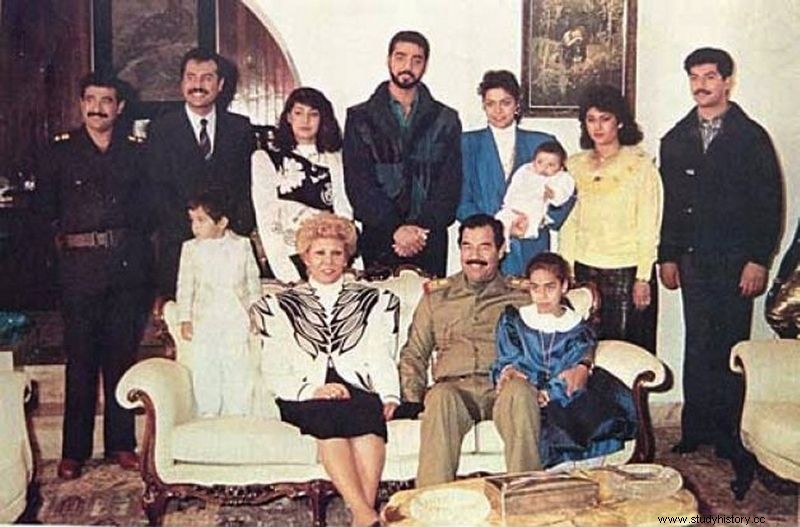
Udajj (standing in the center), the eldest son of Saddam Hussein, was a true alcoholic and psychopath (source:public domain).
Saddam Hussein's son, Udayj, regularly abused expensive alcoholic beverages. In 1988, during an official international party, the drunken son of a dictator tortured his father's favorite cook to death. The court sentenced young Hussein to eight years in prison, but Udajj was released after a few months.
His Romanian friend, Nicu Ceaușescu, also had serious problems with alcohol since he was 16 years old. During drunken rallies, he constantly caused accidents - at least two people were killed and a dozen were seriously injured. Nicolae Ceaușescu didn't care much for them, only advising his son to stop drinking and go to work (read more on this).
19. Drinking on the elephant foot
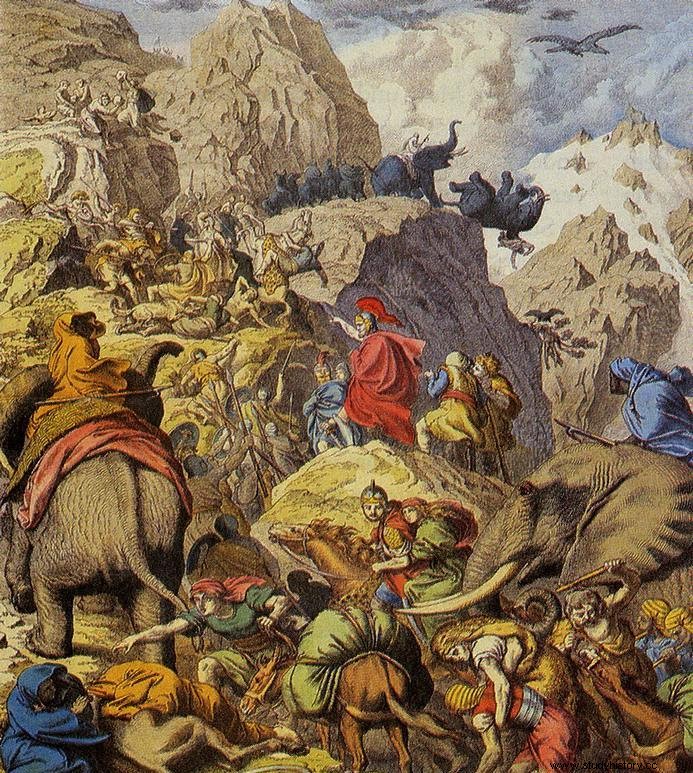
Hannibal and his merry band of elephants cross the Alps (source:public domain).
War elephants in ancient times went to battle… inserted. They were drunk, if only to overcome their innate timidity. There were times when soberly elephants would simply run away from the battlefield instead of trampling their opponents. When consumed, these animals became more passionate and more tolerant to pain.
The only problem was that trained and trained elephants in a state of drunkenness lost many of the traits developed during training. But these animals did not have to be particularly punitive - as long as they aroused the enemy's righteous fear (read more on this topic).
18. From London to Paris on the Alcohol Route
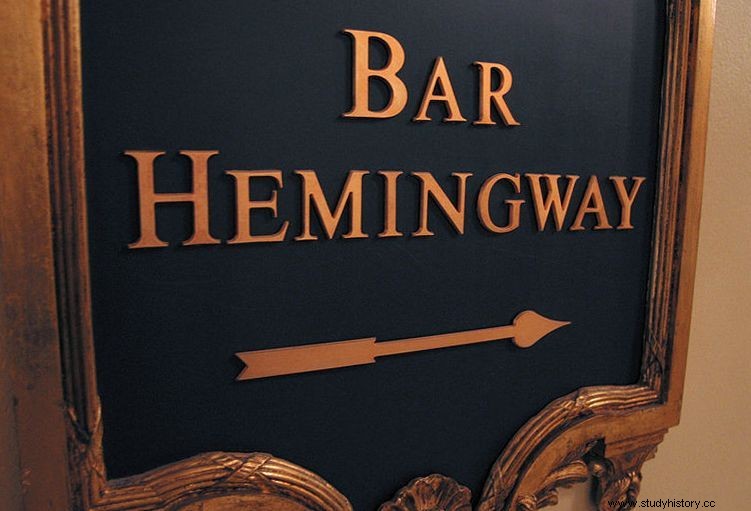
No wonder the bar at the Ritz Hotel is named after Hemingway (photo:Pablo Sanchez, CC 2.0).
Ernest Hemingway missed an opportunity for the journalistic material of his life due to his drunken antics. In May 1944 in London, he took part in a balanga, where the punch was taken from a 40-liter jug from an atomic research laboratory. In the morning, the drenched writer with two companions got into the car. While driving through a darkened city, the party people hit the water tower.
The concussion did not sober the writer. After a few days, he was already indulging in a drink in the hospital bed. On D-Day, his head was still bandaged and he was limping. That is why he did not take part in the French landing and could not write his dream column about the creation of a new front. So he decided - as a compensation - to free the Paris Hotel Ritz from wine supplies (read more about it).
17. A Soviet general must drink…
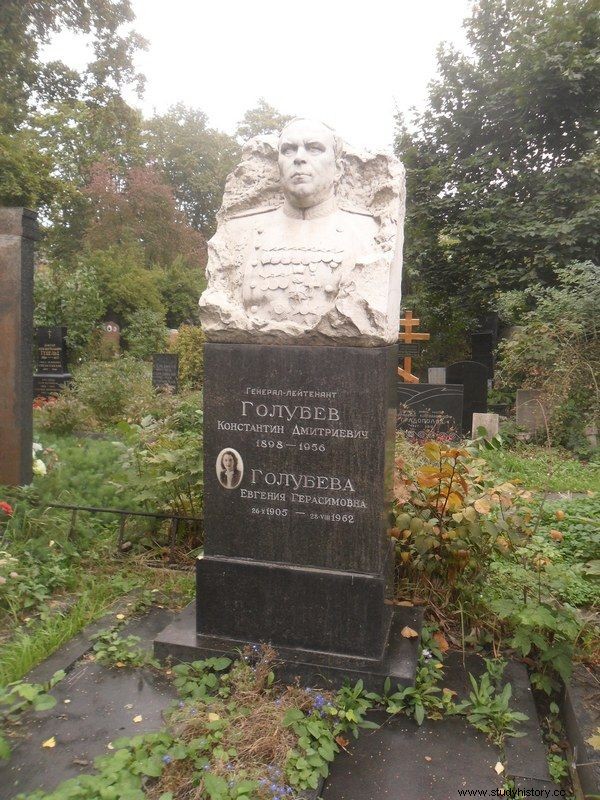
Gołubiew's tombstone in Moscow ... extremely flattering, knowing his preferences (photo:SerSem, license CC BY-SA 4.0).
During World War II, not only rank-and-file Soviet soldiers were often called. The commanders didn't pour out their collars either…
General Konstantin Golubiew commanded his army quite specifically, considering the conditions of the eastern front. Due to the fact that he had a large body, he mainly took care of himself. He ordered engineering battalions to build a six-room house in a safe place. Even though the cannons thundered in the distance, he ate skewers there and washed them down with vodka!
Marshal Grigory Kulik, in turn, owed his military career exclusively to his connections during the Civil War. Typically war activities, however, were not his strongest point. The activity he definitely felt best at was drunken excesses (read more on that).
16. Polish officers were also beaten up
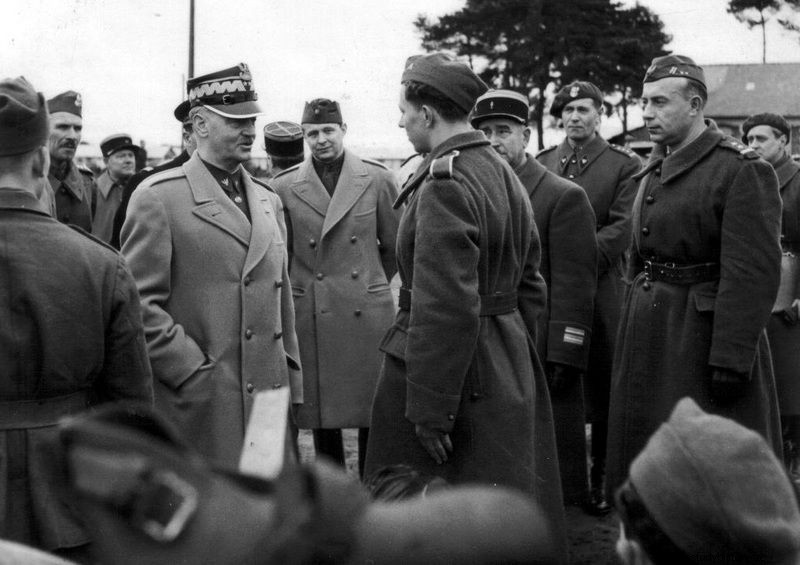
Sikorski among Polish soldiers in France ... there was no alcohol here (source:public domain).
A certain low-ranking Frenchman, due to strong drinks, almost became an officer of the Polish 2nd Rifle Division! When the unit arrived in Switzerland in 1940, the soldiers drank alcohol out of boredom. Even the officers indulged in long hours of libation.
Major Antoni Zdrojewski decided in a drunken sight to make the warrant officer of the French Army helping the Poles ... a lieutenant of the Polish Army. The French even went through the "swearing-in" straight away, which of course was celebrated with a new cableway (read more about it).
15. Russian drinking centuries ago
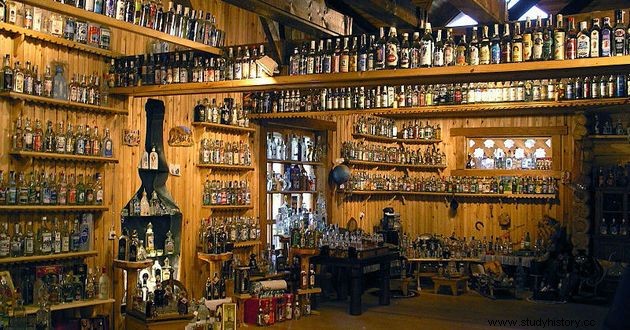
Vodka Museum near St. Petersburg. Russian alcohol culture in a nutshell! (photo:Veikia, license CC ASA 3.0).
As early as in the Middle Ages, brewing beer was one of the duties of the Ruthenian peasants. However, they did not prepare it for their own needs, but for the landowners. The representatives of the lower social classes also often had to pay their master tributes of hops or malt. Boyars and monks made a lot of money from selling beer and its ingredients.
On the other hand, vodka began to be produced in Rus only in the second half of the 15th century, and feudal farms had a strict monopoly on its production (read more on this topic).
14. No power without vodka?
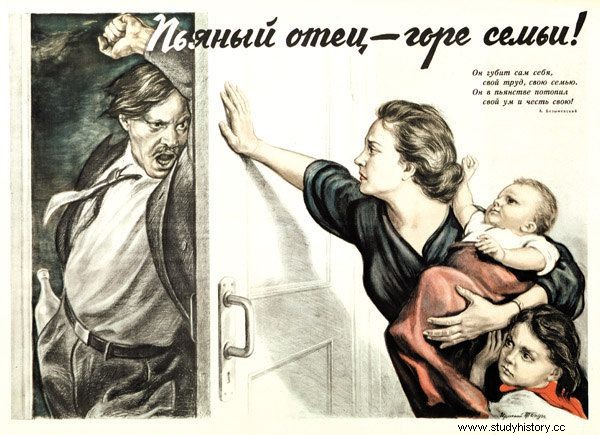
Stalin did not mind that "Drunken father is a misfortune for the family," as this poster proclaimed.
One of the most important political allies of Joseph Stalin on his way to power was… vodka. While Trotsky and Lenin dreamed of an anti-alcohol regime, Stalin was building around himself an alliance of comrades who wanted to restore the liquor industry.
Even during Lenin's lifetime, the future dictator legalized low-percentage alcoholic beverages. In 1925, he finally abolished prohibition altogether. His actions were met with great enthusiasm by the public. Stalin, however, did it not for his subjects, but out of concern for the state budget (read more on this subject).
13. If for a beer, only with a saint!
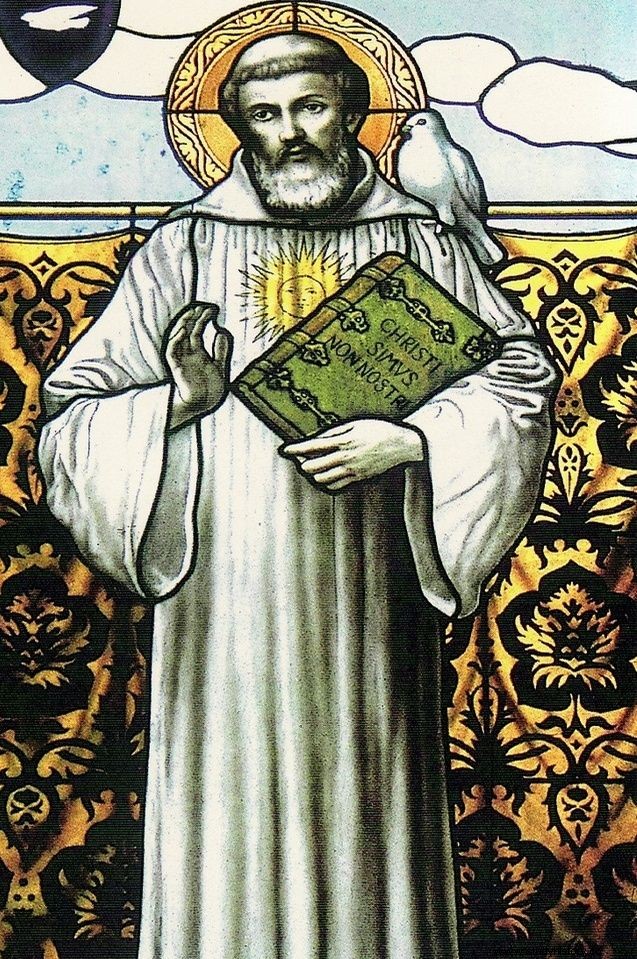
Saint Columban, patron of beer (source:public domain).
The Irish have an interesting, but unofficial patron of brewing. Saint Columban, abbot and missionary from the second half of the 6th century, had 3 miracles related to beer in his biography!
When he witnessed a pagan beer sacrifice, he puffed on a can of liquor until it burst to pieces.
Another time, one of his monks left an open plug over a mug in the basement, because Columban called him while pouring the golden drink. Even so, the beer did not spill and a giant foam crown was formed over the mug which saved the monk from punishment.
Columbanus, in imitation of Christ, also multiplied the bread and… beer. Because the Irish would not appreciate wine (read more about it).
12. Percentages in the life of a slave
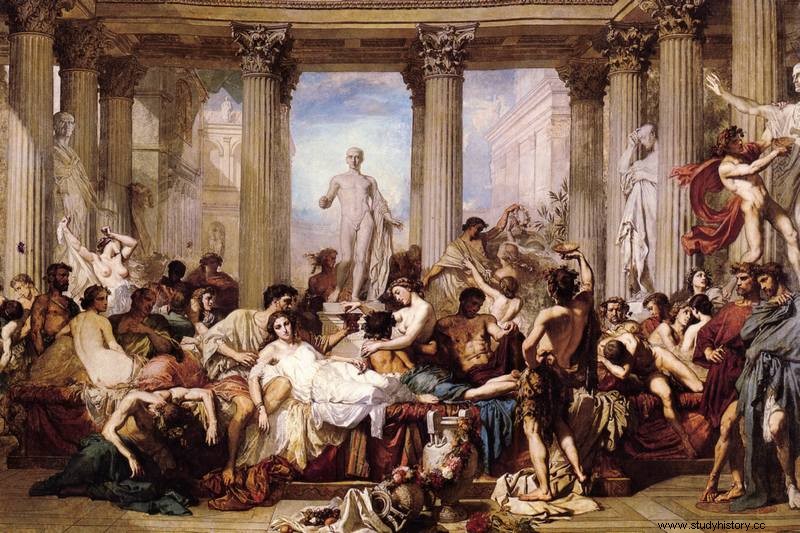
Saturnalia, lasting up to a week, brought with it a real explosion of freedom with entertainment. 19th century painting by Thomas Couture (source:public domain).
Roman slaves could drink a little wine only after the evening meal. The only time for free entertainment for them was Saturnalia - the feast of equality and reconciliation in December, which lasts more than once for a week.
At that time, the drunken excesses of slaves were considered permissible and even natural. The gentlemen invited their servants to the feast table and gave them more wine. Slaves could even give everyone orders like, "Everyone drinks wine by three fingers!" (read more about this).
11. Is it worth getting drunk… only in retirement?
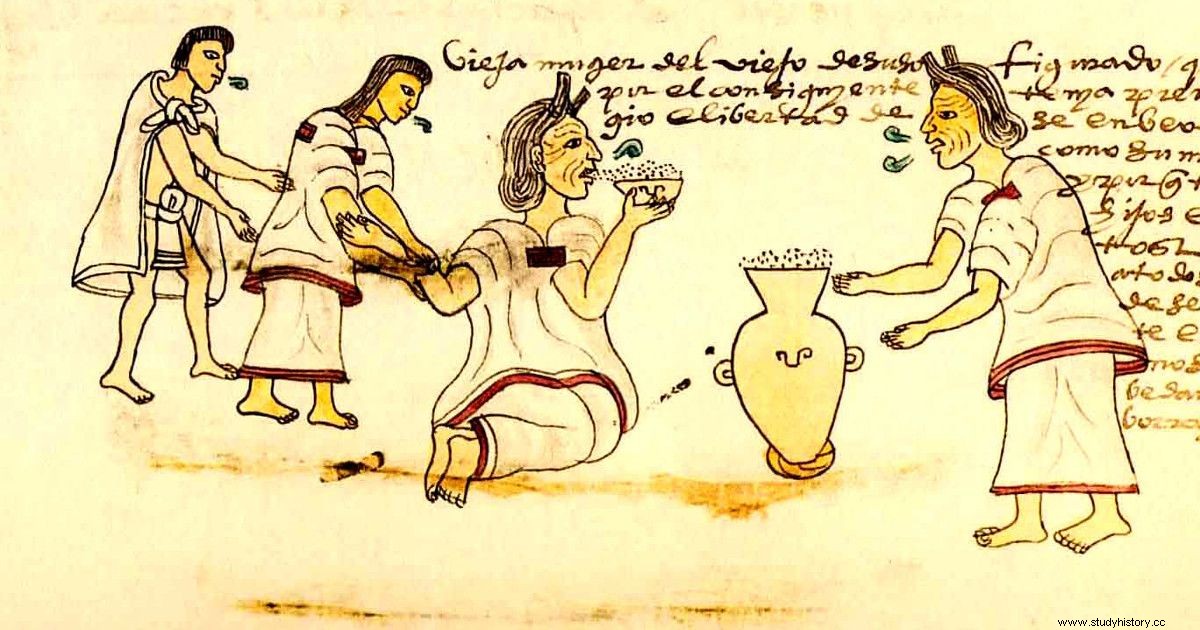
Only older people could drink octli safely (Picture from Codex Mendoza, public domain).
The Aztecs liked to drink octli , a tequila-like liquor made from agave. However, they could rarely enjoy his taste. And it's all because of mythology. One of the drunken Aztec gods was said to have committed incest, and a legendary ruler exposed himself to the revelers when consumed. Thus, drinking alcohol was presented as the cause of misfortunes and downfall. Octli it was actually eaten only on holidays.
There were serious consequences for not drinking moderately. Priests and high officials were punished with death or loss of office. Plebeians could even be stoned. Only people over 70 and having grandchildren (read more about this) were excluded from the ban.
10. Occupational methods for wedding vodka
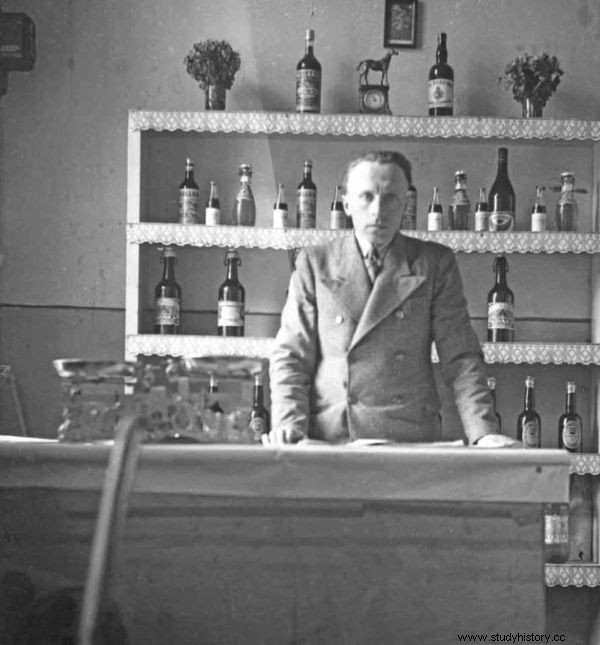
Any place was good to drink moonshine (photo from the book "Occupation from the kitchen").
A lot of weddings took place under the German occupation and the guests had to be provided with an appropriate drink. It was up to the groom's parents to organize alcohol according to custom. Homemade moonshine reigned on the tables. Only in big cities you could buy almost any alcohol, but it was fabulously expensive. Usually they were satisfied with the moonshine, the driving of which was a very popular activity.
In small towns it was moonshine that was the best guarantor of peace during the celebration. A local gendarme was asked to attend a wedding, and he was quickly drunk into his senses to make him sleep through all the fun. Other gendarmes, knowing that their friend was at the party, did not venture into the place (read more about this).
9. Spici Sarmatians
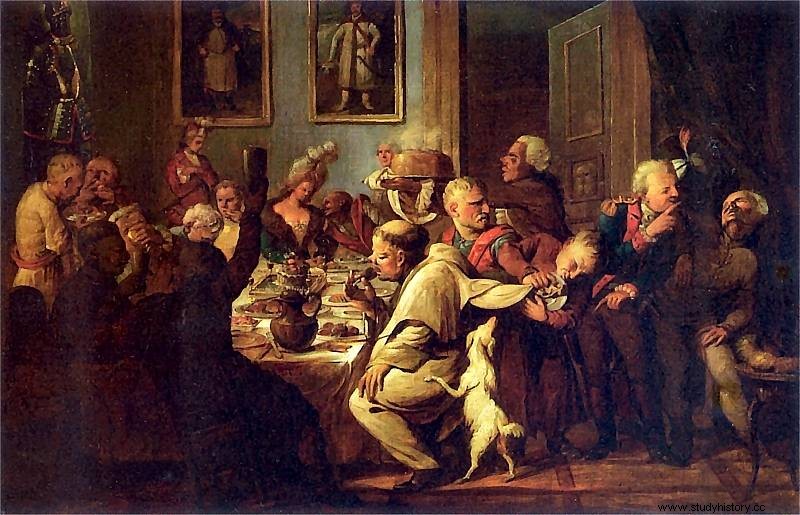
An 18th-century feast at the Radziwiłł court. The booze pours in streams (painting by Aleksander Orłowski, source:public domain).
At the end of the 18th century, so much was drunk every day in the Commonwealth that many hungover Sarmatians might not have noticed the partitions. Rich people in Saxon times consumed about 20 liters of vodka and over 700 liters of beer per year per head.
The last drink was consumed all day long, and the nobles were able to drink a dozen or so mugs during a feast. Vodka was so expensive that even rich Poles enjoyed the cheapest species available - "common" (read more on this topic).
8. Driving on dual throttle…
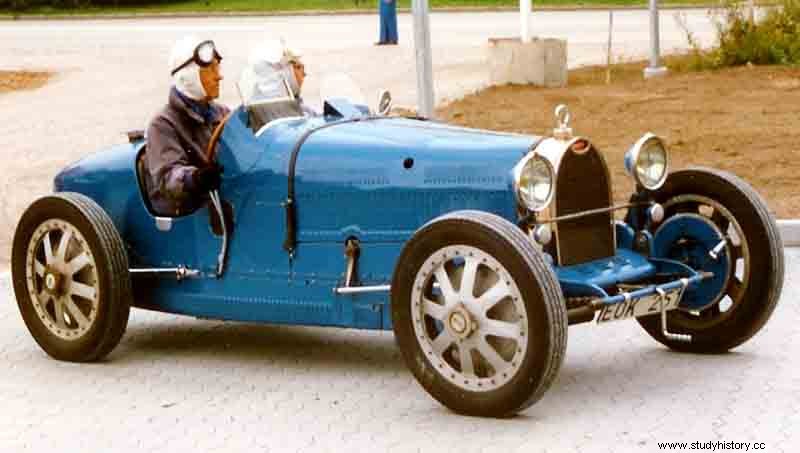
A car from the era, the Bugatti Type 35C. Hopefully the driver wasn't influenced by ... (by Lars-Göran Lindgren Sweden, license CC BY-SA 3.0).
In the Second Polish Republic, drunk drivers de facto they could feel with impunity. The first laws prohibiting dual gas driving appeared only in 1928. However, they were completely dead, as they did not specify what intoxication was, and did not provide for any penalty for sucking driving.
As a result, drivers could go crazy as long as they wanted until they caused a dangerous accident. At that time, however, they were punished not for driving under the influence, but for breaking other laws, accidentally injuring themselves or causing death (read more on this topic).
7. ... and prohibition in the Second Polish Republic
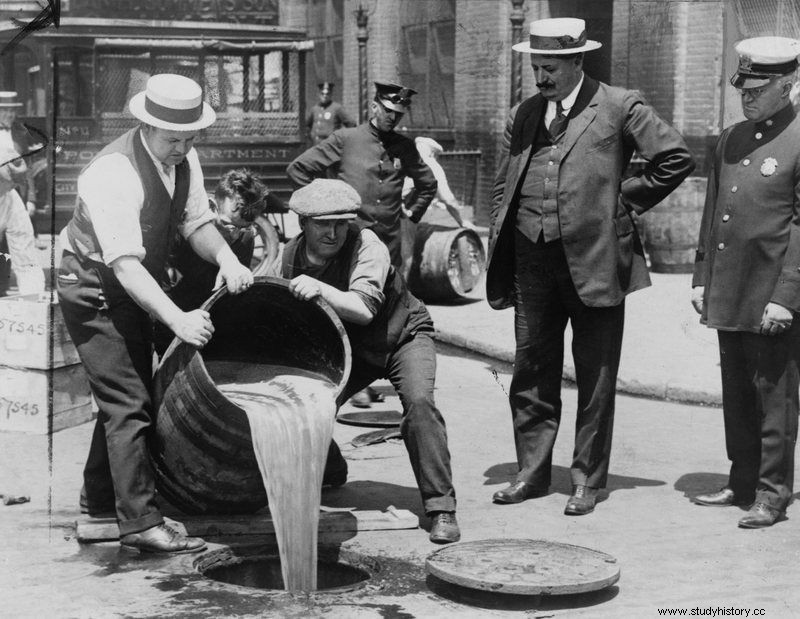
Pouring illegal alcohol in the US. In the Second Polish Republic, there were those who also dreamed of prohibition on the Vistula (source:public domain).
Despite this, there were many real opponents of alcohol in Poland at that time. Supporters of abstinence in the interwar period lacked only a few votes in the Seym to introduce complete prohibition in the country.
Finally, in 1920, the Act on Restrictions on the Sale of Beverages was passed alcoholic . It contained a record of a ban on the sale of alcoholic beverages with an alcohol content over 45%. Municipalities were given the opportunity to enact outright prohibition, and throughout the country were banned from drinking on Sundays and public holidays (read more on this).
6. An abstinent paradise in the north
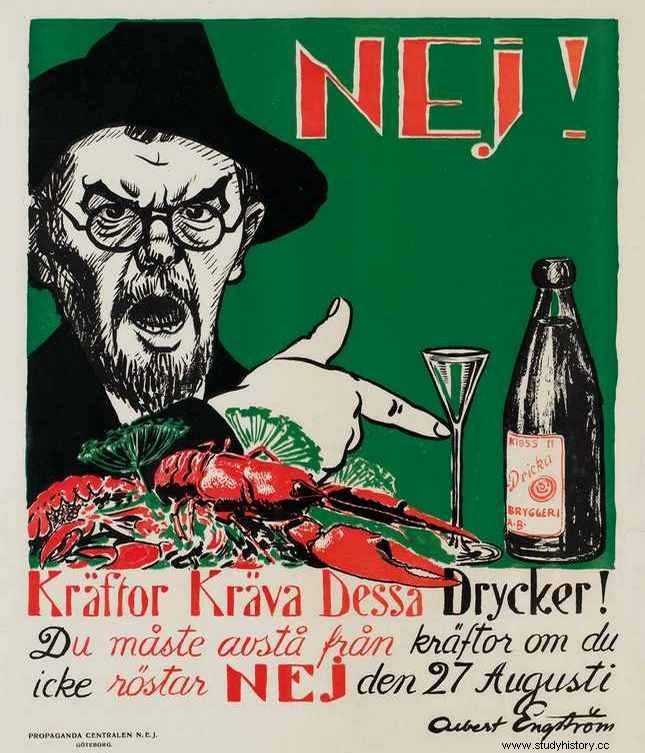
Swedish poster calling for voting against prohibition (source:public domain).
In Sweden, the abstinence movement has achieved such success that the remnants of prohibition still exist today. The Swedes began drafting a prohibition law six years earlier than the Americans. Admittedly, it was rejected in a referendum, but only by a hair.
Ultimately, a partial prohibition was introduced in this country by setting a weekly limit on alcohol consumption. Each purchase of an alcoholic beverage began to be recorded. It was also forbidden to sell alcohol outside the state monopoly. This rule is still valid today.
Prohibition in Sweden was only abolished in 1955 (read more on that).
5. The Alcohol Revolution in Russia
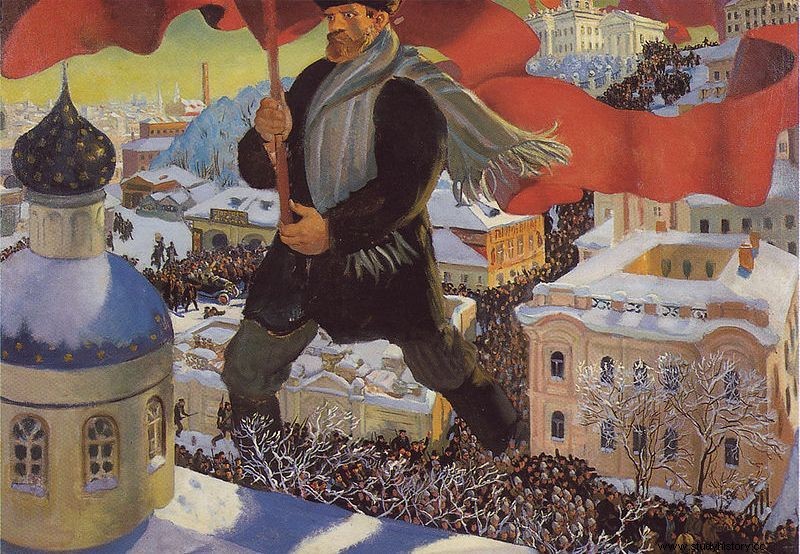
Even the ruthless Bolsheviks found it difficult to control the drunken crowd (the picture shows Boris Kustodiev's "Bolshevik").
Tsar Nicholas II was one of the few Russian rulers who decided to fight alcoholism. In 1916, Duma enacted a permanent and absolute prohibition. However, Nicholas II did not manage to sign the act. At the beginning of the next year, strikes broke out in Petrograd. The demonstrators quickly took over the city, and the liquor stores became the main victim of the social elation.
However, the new government maintained the prohibition law in force. Therefore, when the Bolsheviks conquered the Winter Palace, they motivated the workers to participate with the information about hectoliters of alcohol stored in its cellars. Many of them died drinking there (read more on that).
4. How Gorbachev sobered up the Soviets
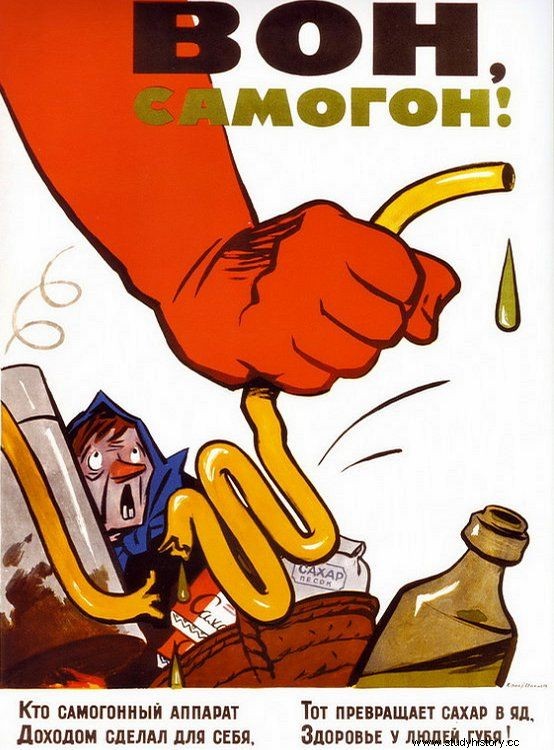
Samogon won! Soviet poster showing the disastrous effects of drinking this drink.
There are many indications that the collapse of the USSR took place, inter alia, in because of the vodka. In 1985, alcohol was the leading cause of 74% of homicides and 72% of rapes. The new Secretary General of the CPSU Central Committee, Gorbachev, began his activity by declaring war on drunkenness. Alcohol production has been drastically reduced while increasing prices. Trade in spirits could only be conducted on weekdays from 2 p.m. to 7 p.m. There was even a risk of being sent to a labor camp for brewing moonshine .
While the health of citizens improved, the costs of the reforms were deadly for the state. The anti-alcohol crusade resulted in a budget loss of as much as 28 billion rubles (read more on this).
3. Cocktail attack in the Führer
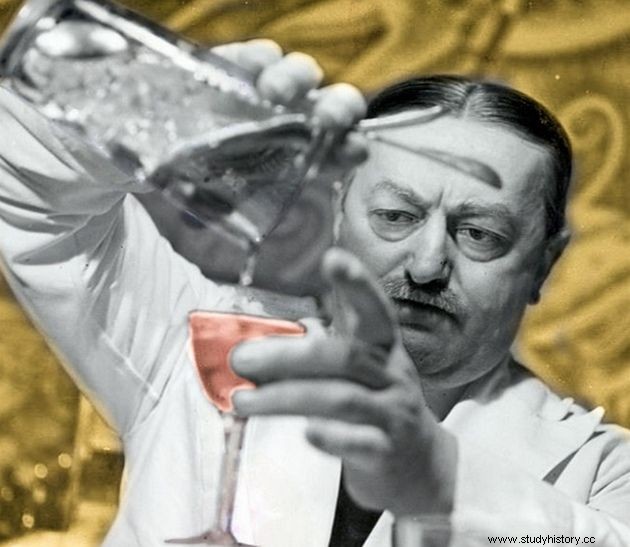
How do you kill Hitler between drinks and drinks?
Frank Meier ran a bar at the Ritz Hotel in Paris for 26 years. Many celebrities flocked to Paris just to try his drinks. After the surrender of France, he continued to work to keep the throats of German visitors wet… even though he was a quarter Jewish. Although many Aryan guests knew about his origins, what mattered to them was that he made great cocktails.
While serving drinks, Frank overheard people associated with the interview . What can I say - even high-ranking Nazis loosened their tongues under the influence of alcohol. And then he passed the information on to the German resistance movement that planned to kill Hitler (read more on that).
2. Revolutionary fun and profitable
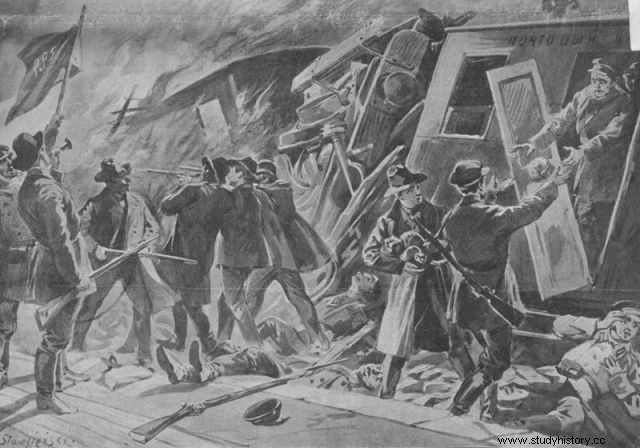
A drunk accident? No, it's a drunk revolution!
Alcoholic drinks were the main target of Polish fighters for independence at the beginning of the 20th century. Raids on liquor stores have become the perfect way to finance a revolution for our terrorists. The owners of alcohol outlets were terrorized with brownings and bombs, but as a rule they were not harmed.
Later, PPS fighters said that they only confiscated money and broke bottles with alcohol. However, the documents indicate that the vodka was not so much destroyed as plundered together with the money. Was it a serious hangover as a side effect of the Polish struggle for independence? (read more about this).
1. How to tackle Poland in dodgeball, it's only drunk!

Stalin plays on the nose of Poles in a bubbly mood (source:public domain).
Negotiations during the negotiation of the German-Russian alliance on August 23, 1939, dragged on until late at night. With the text in its final shape, the adoption began. Of course, the tables were dominated by vodka and Crimean sparkling wine.
Due to the banquet, the pact was not signed until the morning of August 24. Just before the commemorative photos, at Stalin's orders, empty glasses were cleared from the tables. Apparently the Russian leader did not want it to appear that he was signing the pact while drunk. And I guess that's what it was ... (read more about it).
